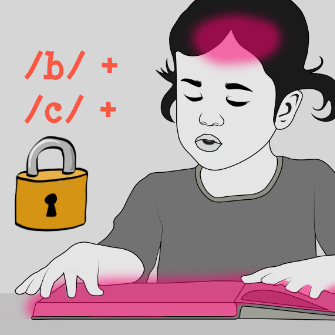Books come in two forms nowadays. They could either printed or digital. I’ve enjoyed both forms. Over time, I have leaned toward digital books.
I find that digital books are more affordable for me. The best thing about is that I don’t have to worry about taking any book along with me.

As long as I have my smartphone, I know I can read my book. I can read in the car, in the restaurant, and even while I’m waiting in line at the grocery. Digital books are more convenient for me.
It’s a different story when it comes to buying books for my daughter. As much as I prefer digital books for myself, I prefer printed books for my daughter.
In this day and age where everything is digital, it’s a must for kids to have access to printed books. This is not just an opinion of mine.
Research shows that kids are better off reading printed books. Since they’re just learning how to read, they must develop deep reading skills. They can only develop deep reading skills if they start reading printed books.
What Exactly Is Deep Reading?
I had no idea what deep reading was until I came across it. It’s a term coined by the renowned essayist, Sven Birkerts.
Deep reading entails reading deliberately and thoughtfully, without any kind of distraction. Only from deep reading can deep thinking come about.
For me, that makes a lot of sense. I feel that deep reading can only be developed when a child is holding and reading a printed book.
A printed book takes a child to a place where only the story and characters exist. The child can focus on the characters and story without any distractions.
Hence, every single word and photo on a printed book is ingrained in the child’s mind. When that happens, the child’s mind is slowly developing the skills of deep thinking and reading.
The earlier these skills are developed, the better it is for the child.
Non-Linear Vs. Linear Reading
There are two types of reading. The non-linear reading is when the reader jumps from one section to another. The reader doesn’t usually finish reading the selection. It may be that he or she is just going through a reading selection to find important information.
Linear reading is the traditional way of reading. This is the traditional reading method that was taught to us as kids.

 Easy, Simple 15 Minutes A Day Reading Method Turned My Child From A Struggling Reader To An Advanced Reader. Works Great For Young Children Too. Click To Read My Story.
Easy, Simple 15 Minutes A Day Reading Method Turned My Child From A Struggling Reader To An Advanced Reader. Works Great For Young Children Too. Click To Read My Story.
Linear reading requires us to read every single word that we see from the left side to the right side of a printed book. There is no jumping in linear reading since we have to go through every single word and page to finish the book.
There is no doubt that linear reading is what’s going to help develop deep reading and thinking. However, this doesn’t mean that non-linear reading is not a good skill to develop.
Non-linear reading comes in handy when there’s a need to develop speed reading. However, it’s important to note that linear reading should be the priority for children who are just learning how to read. Non-linear reading can come after.
How About On-Screen Reading?
Here’s another interesting thought. On-screen reading is a lot different from reading printed books. Neuroscience has proven that on-screen reading makes use of a different part of the brain. It shifts the brain to a non-linear manner of reading.
The reason for that is because on-screen reading paves the way to unnecessary browsing and scanning. It’s going to be pretty hard for a kid to focus on a digital book when he or she knows that YouTube is just a click away.
So, if kids are given digital books to practice reading, they’re not going to be able to develop linear reading. That could be a problem in the long run.
Printed Books Are Critical In A Child’s Learning Development
In spite of the fast rise of digital books, I have to say that printed books are still the pillars of a child’s learning development.
Nothing could be more satisfying than holding a printed book and reading every single word on the page. The printed words, no matter how simple they are, can create images in a child’s mind.
The mere act of turning a page can help expand the images into scenes. At such a young age, a child is learning how to visualize a story in his or her mind.
As a child turns to the last page to end a story, he or she feels a sense of accomplishment. Those simple actions are critical in the development of linear and deep reading.
There’s no doubt that kids are better off learning how to read on printed books. That’s why it just makes so much sense to have my daughter read them instead of digital books.
The digital books can wait until my daughter has fully developed the skills of linear and deep reading.
When your child learns to read at an early age, it expands their vocabulary and opens up their love for learning. It helps build their confidence and vastly improves their learning abilities.
And based on my experience, having the right reading methodology when teaching your child learn to read makes a world of difference.
I should know as I made that mistake. 😢
In fact, you can read my story about my child’s struggle with reading here and how we were able to help my child become an advanced reader here. 😀🤗
